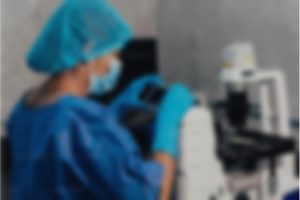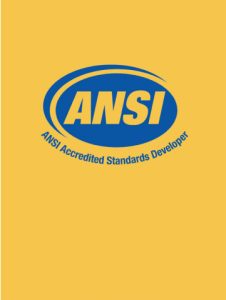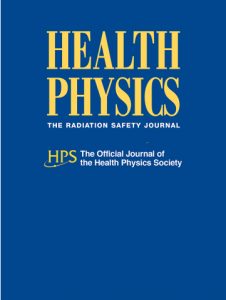Please provide instruction on how to prepare an isolation room in my home, prior to radioactive iodine treatment as well as following treatment, especially knowing that I will be caring for young children five days after therapy? Are there special lead-protection sheets to purchase to put on the bed or upholstered furniture? Will the washing machine need decontamination before washing other items?
There is a lot of misunderstanding about radioiodine therapy and this is a wonderful opportunity to clear up some of them. Radioiodine treatment on an outpatient basis is safe for others, as long as you follow the instructions your health care provider will provide to you.
In order to understand the release instructions, you should understand how radioiodine therapy works. In short, radioiodine is administered as a salt pill or solution. Instead of being normal salt, sodium chloride (NaCl), it is sodium iodide (NaI). Once you swallow the treatment dose, iodine-131 (131I) is rapidly absorbed into the circulation. Only one tissue in the body has a need to fix and hold onto the iodine, namely thyroid tissue. The remaining tissues in the body treat the iodine as salt and the iodine is rapidly cleared from the body circulation, primarily through the kidneys and into the toilet. Excretion is so rapid that as long as you have reasonable kidney function, 50% of the administered iodine is gone within eight hours. Another 50% of the remaining circulating iodine is excreted during the second eight hours and so on. Consequently, after one day (treatment plus 24 hours) you will have excreted approximately 87.5% of the administered iodine. At the end of day two (plus 48 hours), you will have excreted 98.4%. The remaining 1.6% of the iodine at this point is primarily fixed in any residual thyroid tissues and no longer circulating. It’s this residual fixed iodine that achieves the therapeutic effect of the treatment.
You should first understand that you don’t need to place yourself in an isolation room. You just need to make some modifications to your normal activities at home for a few days. During the initial phase of treatment, any bodily fluid will have some radioactive I131 associated with it. Therefore, for the first 48 hours after administration the primary consideration is to limit the spread of contamination from bodily fluids. You should try to keep all family and friends during this period at least one meter (three feet) away and do not have direct physical contact, especially intimate contact, like kissing or hand holding where radioiodine could be passed onto others. Also, by staying at least one meter away from others during the first 48 hours, you will control external exposure to others. After 48 hours, external exposure levels will be greatly reduced from the initial level. You should also make separate sleeping arrangements for the first 48 hours to maintain this distance.
Since the radioiodine is administered as a salt, is can pass through the skin barrier with perspiration, so you shouldn’t exercise or swim in pools during the first 48 hours. Most of the iodine will be excreted during urination, so you should keep yourself well hydrated and as soon as you feel the urge, use the facilities. This will limit bladder dose that is unnecessary for your treatment. When using the facilities, be careful to limit any splashing (men, sit down) and flush the toilet two or three times to make sure the excreted radioiodine is diluted by the sanitary sewerage system. If you have pets or small children, keep the toilet lid closed when not in use to prevent them from supplementing their water supply.
Take a shower each day to minimize any build-up of contamination on the skin and wash hands frequently during the day. Don’t prepare food for others during this period. Keep your toothbrush separate from the rest of the family’s in the toothbrush rack. Rinse the sink, toilet, and shower down after use with standard cleansers or detergents. Do not use hydrogen peroxide, bleach, or agents that use them as a component (this may cause radioiodine to become airborne). If there are any devices in the house that are shared (e.g., computer keyboards, telephones, etc.) wear disposable gloves or cover with plastic wrap when in use and remove afterwards. Protect chairs and couches you may use by covering them with sheets for the first 48 hours.
Personal clothing, sheets, bedding, washcloths, and towels should be collected and washed separately for the first 48 hours. After washing, run the washing machine through an extra wash cycle to clear out any residual radioiodine before using it for others. Keep a set of dishes and utensils for your personal use during this period and wash separately.
Avoid disposing materials with significant levels of bodily fluids (facial tissues, incontinence products, etc.) to the solid waste system. Most municipal solid waste streams are monitored for radioactivity and you may set off the detectors. Instead, dispose via the sanitary sewage system whenever possible. For incompatible items, place in a sealed container and hold in a secure area outside the house for a month or two before disposal.
After the first two days post-administration, 98% of the iodine will be gone and you can begin to ease up on these instructions. However, many providers will recommend that you try to keep it up for the first week post-administration, just to be overly cautious.
However, you should understand that the most important thing is to control the excretion to the toilet where more than 95% of the radioiodine will go. After that, the rest of the bathroom/shower area is the next area of concern. The rest of the instructions involve only minor pathways that contamination might be transferred. While these measures may sound somewhat extreme, they are primarily recommended to keep potential pathways of contamination as low as reasonably possible. Following these instructions will limit any exposure to family, children, friends, or the public to levels that are comparable with background sources of exposure to which we are all subject from natural sources of radiation like the sun and terrestrial sources of radioactivity.
Radioiodine therapy has been remarkably effective for patients and was first used for medical treatment in 1941. In the 75-plus years since its first use, hundreds of thousands, if not millions of people have benefited from radioiodine therapy. I would also note that I have never seen a credible report where a family member, child, friend, or member of the public has been harmed when reasonable measures were taken to prevent exposure to others. So, please do not think that you will be a hazard to the children. Five days is more than enough to bring down the radiation levels to minimal, if not quite back to background.
Please do not buy any special lead sheets. They are very expensive and they will not do any good in this circumstance.
Michael J. Bohan
Radiation Safety Officer
Answer posted on 26 August 2019. The information posted on this web page is intended as general reference information only. Specific facts and circumstances may affect the applicability of concepts, materials, and information described herein. The information provided is not a substitute for professional advice and should not be relied upon in the absence of such professional advice. To the best of our knowledge, answers are correct at the time they are posted. Be advised that over time, requirements could change, new data could be made available, and Internet links could change, affecting the correctness of the answers. Answers are the professional opinions of the expert responding to each question; they do not necessarily represent the position of the Health Physics Society.




